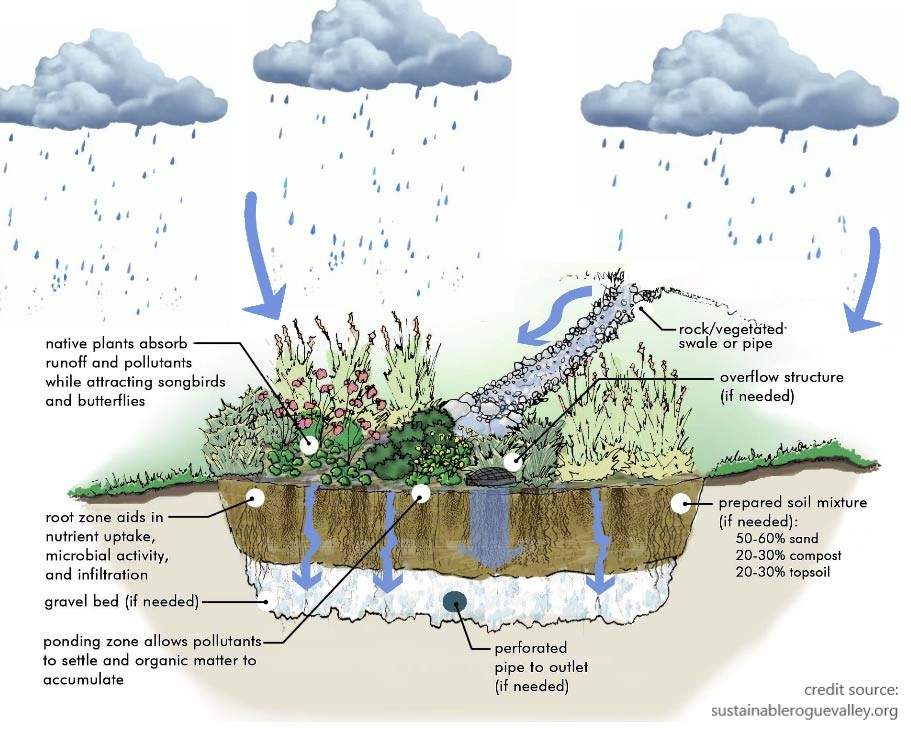What is a Rain Garden?
A rain garden is a shallow, landscaped, depression in the ground that captures, filters, cleans and absorbs storm water (rain and runoff) from parking lots, roads and/or roofs.

Why are Rain Gardens important?
First, we must understand the nature of storm water (rain fall). When it rains, the runoff falls onto roads, parking lots, building and other hard surfaces and picks up dirt, bacteria, pesticides, fertilizers, car oils and other pollutants, leading to bad and/or harmful water quality. This water then flows in the ground, nearby streams and rivers, harming the natural balance of the aquatic environment, harming wildlife and plants.
Without a raingarden, storm water and flooding would flow directly through storm pipes and gutters into our rivers, brooks and lakes. The landscaping of the raingarden creates a natural buffer and filtration, so that the storm water (and flooding) can be filtered by native plants and various types of soil, removing pollutants and leaving clean water to flow back into our water sources. With the help of native plants (and pollinators), we can maximize the benefits of a raingarden naturally.
Overview of the benefits:
- Multi-level filtration process using natural plants and soils.
- Reduces pollutants (from storm water) which flow into water sources, aquatic habitats and soils.
- Improves overall water quality and reduces harm to wildlife.
- Maintains healthy water temperatures in streams and rivers since storm waters are cooled or heated flowing through the ground
- Removed debris from the storm water runoff which can clog storm drains and brooks/streams.
- Reduces flooding by soaking into the ground
- Native plants support pollination by attracting more pollinators by providing food sources and safety.
Why use native plants?
Native plants, such as wildflowers, grasses, and shrubs are already adapted to the local climate and soil conditions. The plant’s roots offer soil aeration and pathways for the water to flow underground. Certain types have deep root systems that can prevent ground erosion.
Native plants create habitats and attract pollinators and wildlife such as butterflies, bees and hummingbirds. More information on that here on our pollinator garden page!
BEAT’s Rain Garden (located at the parking lot)



